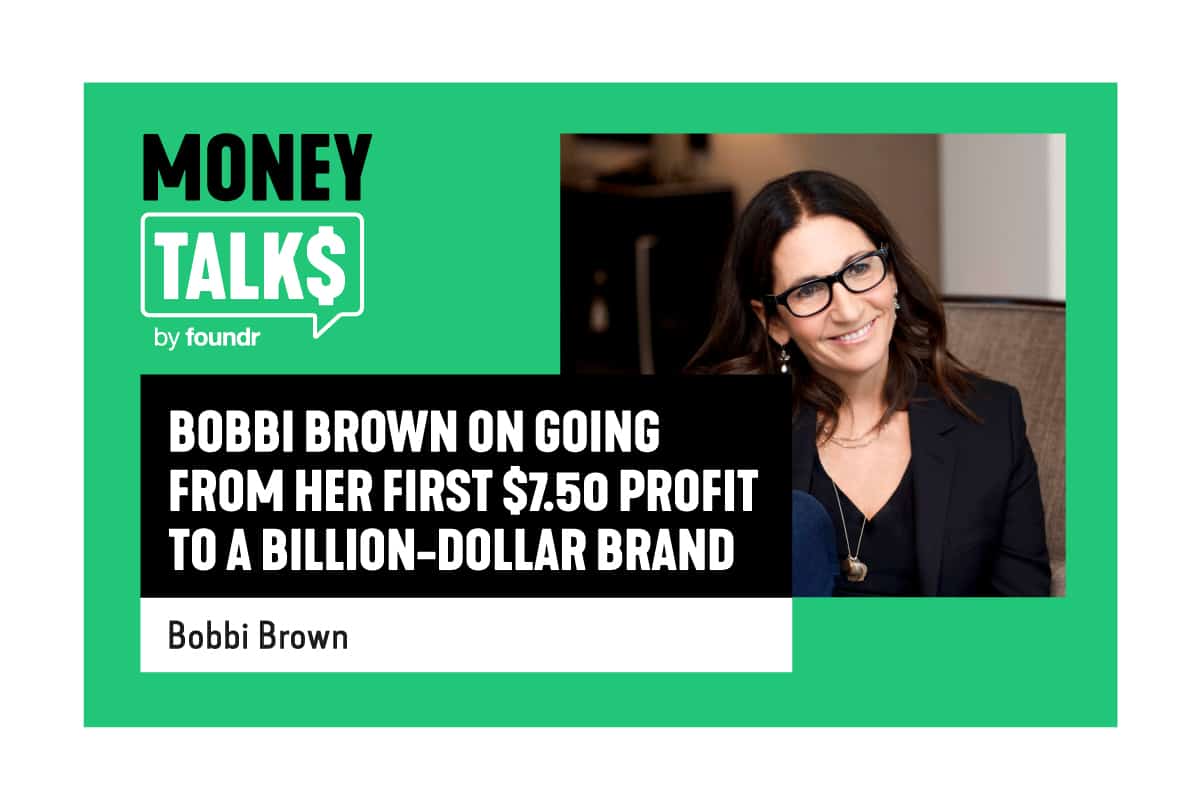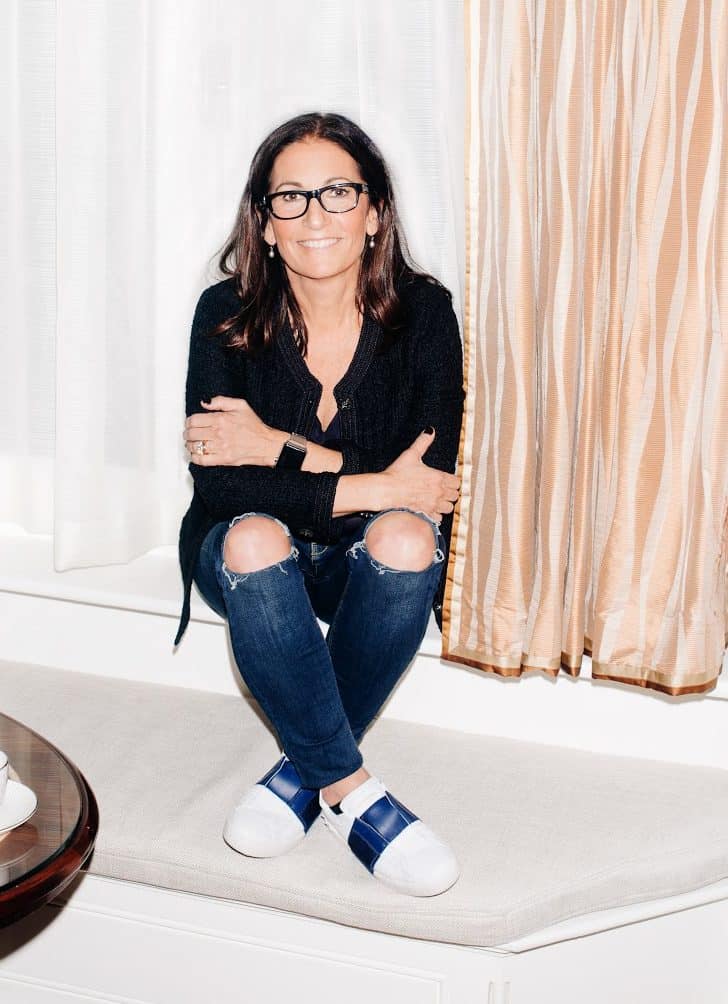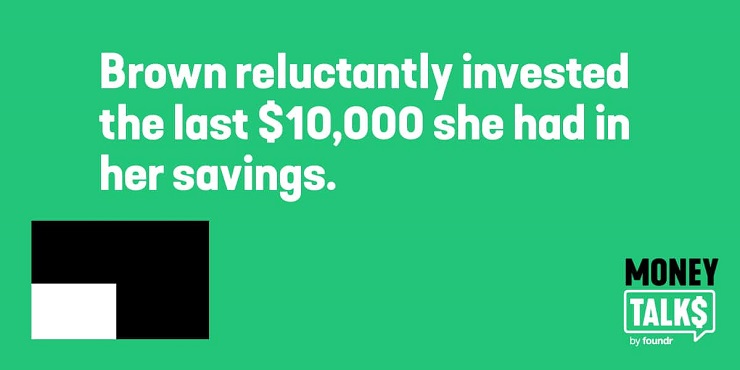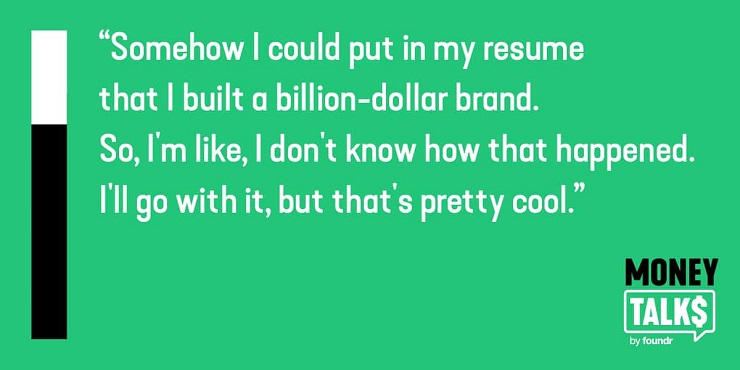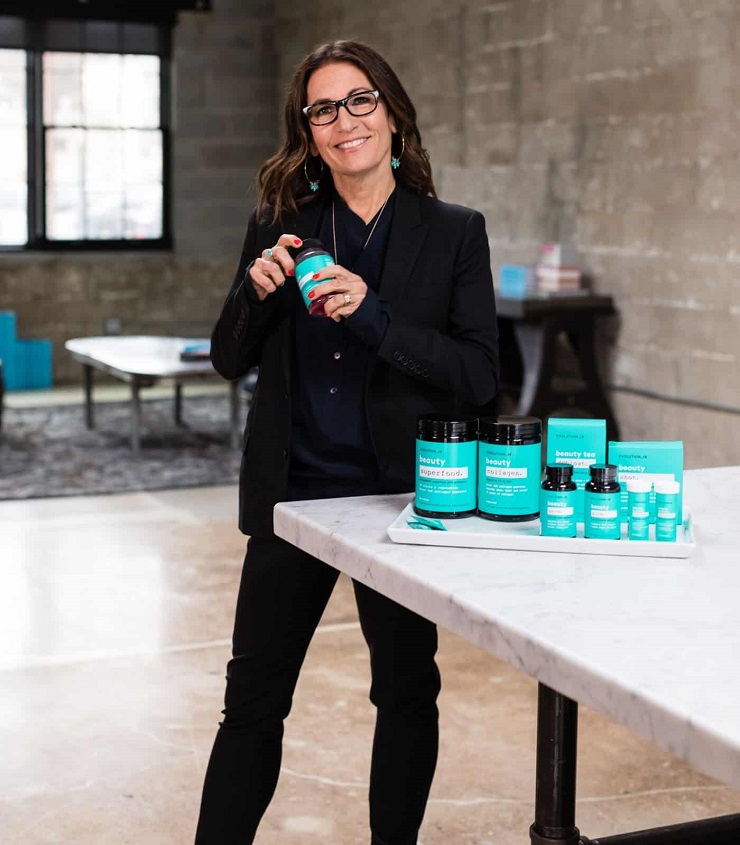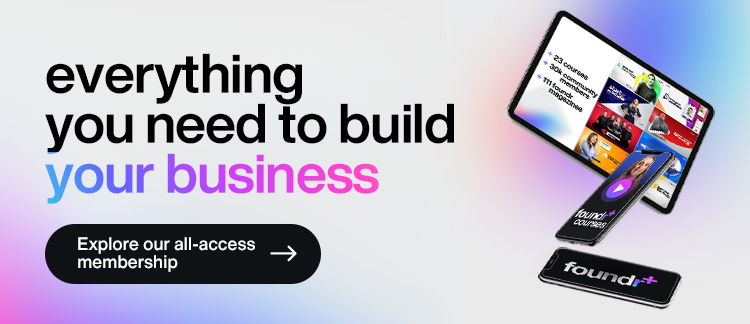Let’s talk money, shall we? In our recurring series Money Talks, we challenge entrepreneurs to be brutally honest about their financial situations—their investments, their profitability (or lack thereof), their money highs and money woes. We’re asking the tough questions and not holding anything back.
In this edition, we had the pleasure of talking with Bobbi Brown, who built and sold her billion-dollar company Bobbi Brown Cosmetics, and has since started up several other successful ventures. Brown opened up about her humble start, her love-hate relationship with numbers, and how an eight-figure sale does and doesn’t change your life.
Bobbi Brown
First Company: Bobbi Brown Cosmetics (sold to Estée Lauder)
Cost to Start: $10,000
Current Companies: Evolution_18, JustBobbi.com
Cost to Start: $0
Time in Business: 28+ years
Key Figure: Brown sold her company for an undisclosed amount, but one report puts it as high as $74.5 million.
In a Nutshell: Her claim to fame is Bobbi Brown Cosmetics, which she built while freelancing as a makeup artist, and eventually sold to Estée Lauder for a windfall in 1995. Brown’s been financially secure (and then some) since the sale, but currently makes her living from popular wellness brand Evolution_18, a hotel she runs with her husband, and speaking gigs around the country. She lives with her husband of 30+ years, has three children (whom she adores), and still loves helping people embrace who they are, imperfections and all.
From Waiting Tables to Her First Profit—$7.50
Brown is not your stereotypical high-profile entrepreneur. Even though she started and sold a billion-dollar brand, she is as down-to-earth as they come. We loved how honest she was about where she came from, her struggles along the way, and how wealth has impacted her life.
Brown started as a waitress out of college and found herself unable to find a job after moving to New York one year after graduating. To make ends meet, she decided to become a freelance makeup artist. Over the years, she moved up the ranks, doing shoots for Vogue and other high-profile publications.
Brown’s passion and hustle were evident early on.
“I would literally just make cold calls and go to magazines, do go-sees,” she says.
While working on shoots, Brown noticed the poor quality of a lot of the makeup and how hard it was to apply. She also preferred a more natural style, a stark contrast to the brighter colors in fashion in the 1980s. She couldn’t find anything on the market that fit her style, so she started blending colors and making her own products.
After being approached by a chemist who helped her create her signature lipstick blends, the two went into business. Brown entered this new venture not knowing what to expect.
“I never knew what a business deal was. I didn’t know what a strategy was. I didn’t know what anything was. But he said alright, I’ll make it. And he says, we’ll sell it for $15, you get $7.50, I get $7.50. He said you sell it and tell people about it and I’ll make it and supply it.”
After a writeup in Glamour (facilitated by her editor friend) Brown was bombarded with offers and realized that she had a growing brand on her hands. But it was still basically a side hustle—she still hadn’t invested a penny into the business. The only charge was the postage her husband paid to mail the lipsticks to her customers. What happened next would catapult the rest of Brown’s career.
“One day, this amazing thing happened where at a party I met a cosmetics buyer from Bergdorf Goodman who said I’d love to take the line,” she recalls. “That’s when we were like oh shit…you can’t do this $7.50 and $7.50.”
A Risky $20K Investment Led to a Billion-Dollar Brand
Brown knew she needed to move fast to keep up with demand. As luck would have it, she met new friends at a dinner party who eventually became her business partners. The partners invested $10,000 and Brown reluctantly invested the last $10,000 she had in her savings.
“So, was I nervous? Yes,” Brown says. “My husband was in law school. I was a freelance artist. Was I worried how we were going to pay our mortgage? Yes.”
But the startup world was very different back then, and investors weren’t exactly pounding on their door. “We didn’t even think of asking anyone for money. Certainly there were no venture people around.”
She took a risk and went for it. “Honestly, I really knew nothing. I was just a wide-eyed, naïve, working makeup artist, newly married, new kids and, I just kept one step in front of the other.”
Don’t Quit Your Day Job—Reinvest the Profits
Ever careful with money, Brown’s business ventures have been profitable, even in the early days. But at this point, things really took off. After launching in Bergdorf Goodman, she predicted she would sell 100 units the first month. To her surprise, she sold 100 units on the first day.
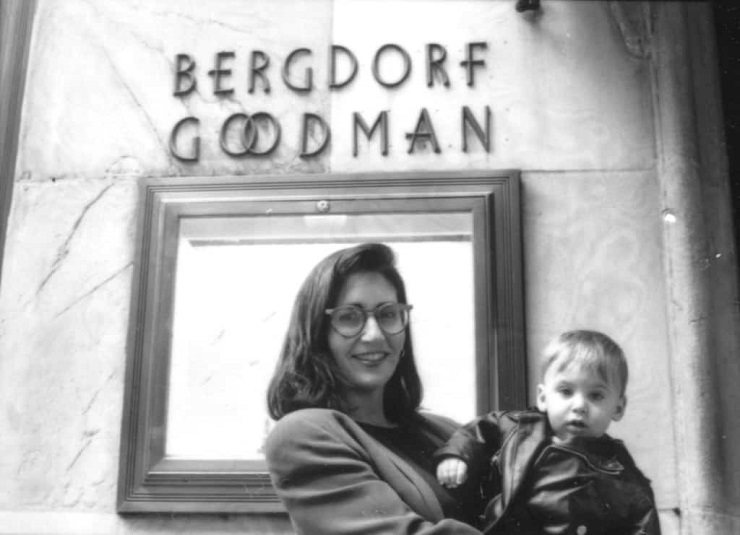
Clearly, this was time for her to jump into the business full time, right? Not for Brown. She kept working, even as the business grew.
“It’s funny, I was still working. I would go to my Park Avenue office, this teeny little hole in the wall and then go to a fashion shoot or come to the office after a fashion shoot. I was still bringing money in from my daily work because I was a known makeup artist at that time, and my husband was still in law school.”
Keeping her makeup gigs going was also good PR. As Brown’s new company gained momentum, Neiman Marcus, Bendels, and more came calling. She then expanded into international waters and the business started to take on a life of its own. Her company became the number one line in Bergdorf and Neiman Marcus after only four years.
Even as the company was making money, Brown didn’t take a salary for a long time.
“It was always profitable. The only loss was in the beginning when I wouldn’t even call it a loss because we didn’t put more money in,” she says, referring to the initial $20,000 injection. “We really reinvested the money that we brought in.”
How the Big Sale Changed (and Didn’t Change) Her Life
Characteristic of Brown’s laid-back approach to business, the company sale went down in her car while the family was visiting Nantucket. She recalls her husband sealing the deal on the phone with Leonard Lauder while she was cleaning up after her second child who had just peed in his diaper. It wasn’t an ideal setting, but it got the job done.
Why did Brown sell the company after only four years? For one, she recalled struggling with her business partnership.
“I was certainly not the strong businesswoman I am today, and it was a real trying time, and part of the reason that I was excited about selling the company.
“Estée Lauder, when they bought us, they said we are amazed by your success and we think we could help grow your business while you do what you love and keep everything totally autonomous, which I didn’t know what that meant at the time, but I thought it was cool. It just meant that I could do what I want. And most of the years it worked that way.”
The company was acquired for an undisclosed amount, but according to Inc, Estée Lauder reported that the $74.5 million it spent that year was principally on the acquisition.
Brown didn’t give the exact amount in our interview, but did offer some detail on the sale. “We had no stock options. We sold the company, when the taxes and everything was done, we got half and they got half. We didn’t have to give money to anyone else because we didn’t take anyone’s money.”
Brown stayed on with Estée Lauder as a salaried employee in the role of Chief Creative Officer for the next 22 years, signing new contracts every five years and then eventually two years at a time as she became less certain of how long she wanted to stick around.
How did Brown celebrate with her cut of the sale? We’ve all certainly fantasized about what extravagance we’d indulge in if we suddenly came into millions of dollars.
But for Brown, happiness is really about family and living a pretty simple life, and she was already satisfied with her house and car at the time. There were two major new expenses—she committed to sending her nieces and nephews to college and bought New Jersey Nets floor seats.
She also was super psyched about buying—wait for it—lobster salad.
“I’ll never forget when we were first married we would go to the Hamptons and there was this very well-known Gourmet Deli and we’d stop there and eat lobster salad. I think it was like $90 a pound or something.
“And when we sold the company, we went back to the same place and we were like, ‘Give us a pound. We want a whole pound.’ Then we kind of like fist pumped afterwards like, yeah, we made it.”
You would think that acquiring such a large sum of money would dramatically alter your life. But, for Brown, it was mostly business as usual. Sure, she knew she’d never have to worry about her mortgage, finding money for vacations, or buying things she wanted, but she was never one to live a lavish sort of life.
“I don’t spend ridiculous amounts of money on myself and things. So I don’t worry about it.”
Brown’s husband is also a successful businessman in his own right—a real estate developer and entrepreneur. So this power couple is on solid financial footing, with ambition to spare.
‘I Got Ds in Math and Built a Billion-Dollar Brand. I Don’t Know How it Happened’
We loved how candid Brown was when talking to us about her relationship with her businesses’ numbers. For one, she’s never wanted to be the one to worry about them—and somehow this works in her favor.
In fact, she’s never been one to worry about money in general, always feeling optimistic that things will work out. She does credit some of her success to a piece of advice she got from her father early on.
“I could not, could not, keep a budget,” Brown says. “I kept incurring interest and all of a sudden I owed so much money and I came to him freaking out and I said, ‘Dad, I just can’t follow a budget, will you help me?’ He said, ‘Well, stop trying to follow a budget, just figure out how you’re going to make more money.’”
When asked why Brown thought she had become so successful, she couldn’t tell us, exactly. She was the kid who got Ds in math. Her mother had to beg her teachers not to fail her so she didn’t have to go to summer school.
“Somehow I could put in my resume that I built a billion-dollar brand. So, I’m like, I don’t know how that happened. I’ll go with it, but that’s pretty cool.”
To this day, she doesn’t find much joy in the numbers side of business, but over the years, she’s learned what she needs to know, getting by with a combination of common sense and basic understanding of concepts like profit margin, cost of goods, etc. And while Brown calls herself a serial entrepreneur, she says she’s never been motivated by trying to make a certain amount.
“I don’t do it for money. I won’t call myself a strategic person but I kind of am. I understand the way the world works, especially now. But I never sit down and put it on paper and follow a strategy. I just kind of understand the cadence of how things work.”
What really drives her as a businessperson is her own curiosity and love of taking on a challenge.
“I love working with teams of people and I like figuring things out when certain things don’t work. … I enjoy this process of building businesses and taking on projects.”
How Brown is Currently Making Money
As you can imagine, Brown is up to her eyeballs in passion projects. Her husband has a hotel development project that falls under Brown’s lifestyle brand. The hotel has 31 rooms and has just doubled its revenue. Brown handles the creative PR and marketing.
Turning her focus to “inner beauty,” Brown became a certified health coach and launched her wellness brand, Evolution_18, a venture that has turned out to be much bigger than she ever imagined.
Evolution_18 is in 1,500 Walmart stores as of April 2019 and will be in 3,000 stores in September 2019. The company’s mantra Beauty On the Inside Out is doing well with retailers, and the brand will be profitable in Q4 2019, less than a year after launching.
She’s also publishing content on her site JustBobbi.com, but that endeavor hasn’t pulled in revenue just yet.
“I hope at some point we’ll figure that out. I mean that’s probably the toughest one, even though our audience is growing pretty rapidly.”
She also does a podcast with VaynerMedia called Long Story Short, which has a couple of sponsors and is doing well and growing. At this point, her media platforms are focused more on marketing her other brands.
Brown also makes money through speaking engagements. “That is pretty profitable and that money goes right back into the business.”
Taking Funding vs. Bootstrapping
While not opposed to taking venture capital, Brown says she is not at the point where she wants to take on investment. As for why, Brown cautions entrepreneurs to understand why they are launching their brands, and in her case, it’s not about fast growth.
“I think it’s really important when you are launching a brand—it’s like having a baby—you have to really make sure…that there’s a reason for it. I’m not doing this brand to sell it in a year. I’m doing this brand because I believe in it and I’m learning a lot. It’s a completely different business and some of the products are killing it and a couple are slow.”
She’s also a firm believer in bootstrapping and frugality. In the early days, she relied on free methods to get the word out about her cosmetics brand.
“We just we grew our business in the early days with PR. So we’d send out press releases and one of the partners used to be a big PR woman so she, with an assistant, did most of it in the beginning.”
She eventually became the beauty editor of the Today Show, and would go on the air once a month to teach different makeup techniques, which was golden publicity.
While not everyone can get on network television, Brown says marketing success is more straightforward than people often think. It’s a matter of “putting one foot in front of the other” and figuring out what works. PR remains a solid strategy.
“It’s kind of related to fad diets. Everyone is like, ‘Let’s do Keto. Let’s do this.’ And finally people just say enough, nothing works, just hard work, eat less, exercise more, do the right thing.”
Brown’s Current Financial Situation and Best Money Advice
Brown was never one to worry much about money, even back in the freelancing days. But today, her family’s finances are in great shape, she says, to the point that they’ve been able to embark on philanthropy. As a matter of fact, she can never seem to keep cash on her.
“I’m the kind of person, and I drive my husband crazy, if he’ll give me $100 and I’ll be in some restaurant with some business friend and I go in the bathroom and there’s a woman who’s giving out towels in the restaurant and I’m like okay, and I just hand her my $100.”
But don’t mistake generosity for carelessness. Brown’s best money advice?
“Don’t spend money until you have it.”
Especially with all the options out there today, she recommends using all the free channels you can while you build. This means Instagram, Facebook, whatever makes sense that won’t cause you to overspend.
Brown has one more big piece of advice when it comes to business expenses: Beware of the consultant! Or as she calls them, “people who tell you what you should be doing and actually don’t do it.” She learned this lesson back in the Estée Lauder days. Brown also advises against wasting money on branding or PR agencies until you’re ready for it.
“All the wasted money that was spent on consultants and agencies, I wish I would have had that money to give to the employees.”
What Does Brown Love to Spend Money On?
This is our favorite question here at Money Talks. And Brown’s answer surprised us—she’s a sneakerhead!
If you have the pleasure of running into Brown on the street, you’ll likely find her wearing what she calls “ridiculously-priced, cool sneakers.”
Aside from shoes, Brown loves family time and good food. Taking more advice from her father, who told her to always ”buy and eat the best food,” she frequently treats immediate and extended family (whom she refers to as her “posse”) to a big dinner of fine food and wine.
“That’s one of my biggest joys.”
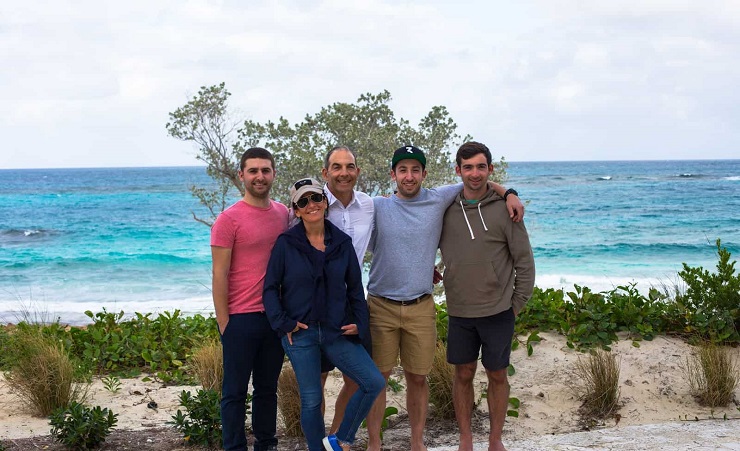
Final Thoughts
While Brown’s hesitant to pin down the secret to her success, I was so inspired by her laid-back relationship with money (even before she had very much of it), and I have a hunch this is one reason why she’s done so well. Brown is a passionate hustler and simply trusts that everything will work out—and it mostly has.
She may never choose to grow another billion-dollar business. But when you look at Brown’s passion, perseverance, and willingness to take risks—we’d say that’s a recipe for billion-dollar success if we ever saw it.
Here’s where you can find Bobbi Brown online:
- Follow Bobbi on Instagram
- Bobbi’s lifestyle brand JustBobbi.com
- Bobbi’s wellness brand, Evolution 18
- Bobbi’s podcast Long Story Short
